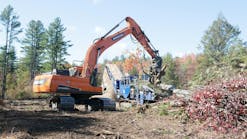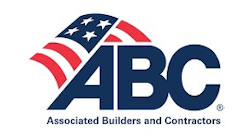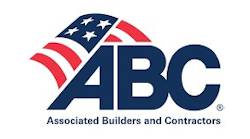When it comes to digging, loading, and piling dirt, nothing beats a bucket. But what if you want to use your excavator to handle other tasks, such as lifting logs, placing boulders, clearing brush, or even tearing down a small building? That’s where you need—if not an extra hand or two—at least a thumb to get a better grip on irregular-shaped objects.
Manufacturers offer a variety of mechanical and hydraulic clamps, which work like a human thumb, to pinch an object between the thumb and the bucket, enabling you to use your excavator or backhoe, to handle unwieldy material faster, easier, and more safely.
“Just like using your hand to hold material against shovel or rake, a thumb allows a machine operator to grasp and manipulate objects or loose material much easier, maximizing a backhoe or excavator’s versatility in a range of applications,” explains Mark Elliott, sales manager for Amulet Manufacturing Co., which makes a line of thumbs. “A thumb creates a positive gripping profile to significantly increase the capability of a backhoe or excavator. It’s just the same as trying to reach down and grasp rocks or material, such as dirt, with your hand without using your thumb. You may get some, but not as much as using your thumb.”
That, in turn, opens the door to more ways of making money.
“Customers often tell us that, since purchasing a thumb for their machine, they’ve taken on projects that they would have never considered before,” Elliott says. “Many of those same customers had previously lost out on bids to competitors with thumbs on their machines who could do the same job in half the time. Time is money, and thumb owners know it.”
A Multipurpose Tool
Before buying an excavator, land-clearing contractor Jimmy Harris had rented excavators with thumbs. So when the owner of the Greenville, NC–based Harris Land Development bought his first excavator in 2004, a Hyundai R210, he wasted no time equipping it with a Werk-Brau hydraulic E-Z Grip Material Handler thumb.
“I wanted to be able to multitask,” says Harris, who also equipped his second excavator, a Hyundai R160, with another of these thumbs.
He uses the thumb on his land-clearing projects for picking up logs. “I couldn’t do what I do without my thumb,” he says. “It’s my main tool for these projects. I could pick up a log with just a bucket, but it would be a very slow process and it wouldn’t be safe, because I would have no control over it.”
Harris also uses his thumb on excavating jobs for handling and laying plastic and concrete pipe.
“If I’m digging and run across debris, it’s very easy to pick it up with the thumb and move it out of the way.”
The thumb has also proved handy when working with plastic or concrete pipe, he adds.
“I can use the thumb to apply a minimal amount of squeeze pressure to carry and place pipe in a ditch,” he says. “Because of the weight, I don’t pick up concrete pipe larger than about 24-inches diameter. However, I can pick up 20-foot sticks of 36- to 48-inch diameter plastic pipe without any problems.”
The thumbs on the excavators that Harris used to rent were mounted in a fixed position at about a 45-degree angle to the stick. His E-Z Grip thumb, on the other hand, folds up tight against the stick when not in use. “I load a lot of dump trucks, and a rigid thumb can really get in the way in that kind of work,” Harris says. “My thumb folds out of the way to provide the truck clearance I need when loading trucks, especially when the excavator is working at or below ground level.”
Another contractor saving time and money with a thumb is Terry Dykstra of Dykstra Excavating Inc. in Orange City, IA. He uses a Kenco Hardrock hydraulic thumb. “It’s a very useful tool when working with loose debris, trees, and even large pieces of concrete foundation,” he says. “The thumb allows me to work faster and more efficiently compared to my old method of using a track-loader.”
Thumb Versus Grapple
Another time-and-money-saving attachment for handling various types of materials is the grapple. Instead of a bucket, it features two sets of finger-like tines that let you efficiently clutch and load bulky land-clearing debris, chunks of concrete, and tangled rebar from demolition projects, boosting productivity.
Generally, grapples are used for more specialized applications, such as handling brush, demolition material, or scrap metal, where no digging is required. By contrast, thumbs offer more versatility. “A thumb is great when the job requires going back and forth between digging and material handling, because the bucket can still be used for excavation work without having to remove the thumb,” says Chris Nichols, general manager of Aim Attachments.
The thumb is something of “a poor man’s grapple,” according to Tracy Black, operations manager for Kenco. “It’s significantly cheaper than a grapple, and it doesn’t take a lot of work to install. However, you can’t pick up as much material with a thumb as you can with a grapple. Some guys who do light demolition, like a garage or a house, prefer the thumb because it’s quick and easy to mount in its bracket. For tearing down larger buildings, though, a grapple is usually a better way to go, because it can handle more material faster. Other operators will dedicate one machine for use with a grapple on demolition jobs and use buckets and thumbs on their other machines for the rest of their work.”
Peter Baumann, sales manager for Weldco-Beales Manufacturing Corp., reports regional differences in popularity between these two types of attachments depending. “Grapples are pretty much used throughout North America,” he says. “However, use of thumbs is much higher west of the Rockies than to the east, where many equipment owners and operators aren’t aware of the benefits of thumbs in saving time and labor. For example, one operator can use a compact excavator, bucket, and thumb to set rock for building a retaining wall in about half the time it would take another operator using the same machine and bucket without thumb and two or three guys on the ground to move the rocks around.”
Thumb Styles
Thumbs are available in several styles that differ in terms of ease of use, size of opening between the thumb and the bucket, and price.
A rigid or stiff-arm thumb is normally welded to the underside of the dipper with an independent main pin. The lowest in price, it offers two or three working positions. Typically, they’re mounted at an angle between about 90 degrees and 120 degrees to the stick. This angle can be adjusted manually by sliding one end of the thumb along a bar or mounting bracket welded to the stick and pinning it to the bar through one of several holes. Some require removing the thumb from the bracket when not in use. Others are designed so that the thumb folds back and is secured out the way against the stick.
In the case of a hydraulic thumb, the hydraulic cylinder is pinned directly to the thumb. This allows the thumb to rotate from about 135 degrees to 160 degrees, depending on manufacturer, to offer more options for clamping onto an object and folding back much farther than a rigid thumb.
“This style is very easy to install,” says Bo Pratt, sales manger for Rockland Manufacturing. “It gives you more precision than a rigid thumb for handling objects like large stones to minimize any scarring. Also, unlike a rigid thumb, you can use it at maximum reach of the machine.”
In addition to a higher price tag, a hydraulic thumb requires spending another $2,500 or so to add a separate hydraulic circuit to the machine for controlling the opening and closing of the thumb from the cab with foot or hand controls.
The highest-priced style, the hydraulic thumb with progressive link, does not pin onto the end of the stick. Instead, it has a mechanical linkage that hangs down about 12 to 14 inches from the end of the stick. This allows the thumb to rotate up to about 180 degrees. By providing the widest opening between the bucket teeth and thumb, it offers the most versatility for picking and placing objects.
Either type of hydraulic thumb can also be used with a quick-coupler for changing between other attachments quickly and easily.
“We are experiencing much more interest in hydraulic thumbs compared with manual thumbs,” says David Jenkins, president of Solesbee’s Equipment and Attachments in Douglasville, GA. “Contractors are beginning to understand how much more productive the hydraulic thumbs can be. The costs of adding auxiliary hydraulics are minimal compared to the increase in productivity.”
Thumb styles also differ in width. Originally, a thumb consisted of a single tine, about a foot wide. Over the past several years, wider thumbs with three or four tines that close in between the teeth of the bucket, have increased in popularity, reports Dale DeWeese, sales manager for Werk-Brau Co. Inc. “Multi-tine thumbs are designed to handle more and looser material,” he says. “Because of the way the tines mesh with the bucket teeth, they also reduce spillage from the bucket.
Another difference in styles is the profile of the thumb. Some are smooth-edged. Others have a serrated edge for better gripping. Still others have more curvature to provide a little extra capacity for picking up groups of smaller-diameter logs or larger-diameter individual logs.
Grapple Choices
Much wider than a thumb, a grapple offers more material-handling capacity. The selection includes grapples designed specifically for such duties as demolition, brush, stump removal, rock, or light material work.
On most grapples, one jaw remains stationary while the other, operated by a hydraulic cylinder, closes and opens. In the case of grapples, which rotate 360-degrees for maximum versatility, both halves open and close together hydraulically. This type requires two additional hydraulic circuits—one to rotate the grapple and another to open and close the jaws.
Those designed for heavy-duty demolition, rock handling, or severe land-clearing applications typically feature a two-tine clamp and a three-tine frame for maximum clamping, prying, and digging forces. Grapples built for less-demanding land-clearing work and for handling heavy, bulky material usually have a three-tine clamp and a four-tine frame. Grapples designed for working with lighter, bulky materials, trash, or light scrap normally have a clamp with four tines and a frame with five tines.
Depending on manufacturer and model, grapples are made with solid tines or with tines constructed in a box design for added strength and rigidity.
Some grapples have mounting brackets and pivot points that are independent of the bucket pins. When the attachment is unhooked, the two halves stay together, eliminating the need to re-assemble the grapple when remounting them on the machine.
In addition to grapples that are mounted in a fixed position on the end of the dipper stick, a grapple that rotates 360-degrees offers added versatility.
“It allows you to place the grapple in the best position to pick up a rock, pole, log, or other object regardless of the position of the excavator boom and dipper stick in relation to the object,” says Mark Shukla, director of marketing for Rotobec Inc., which makes a line of grapples and hydraulic rotator systems for these machines. “This type is extremely useful for saving time and effort in complex material handling situations.”
Choices include two styles of rotating grapples. The positioned-type of rotating grapple can be mounted directly on the bucket pins, the most common option. “It provides the ultimate material handling attachment solution,” Shukla says. Other positioned-type models can be mounted using either a pin-grabbing coupler or a wedge-type coupler.
The dangling style rotation grapple offers excellent operating versatility, he notes.
“This style of grapple hangs off a yoke on the dipper stick to move freely forward and backward and side to side, giving you a great deal of control in picking up and placing objects,” Shukla explains. “Either style of grapple will handle jobs like placing rocks for a retaining wall or loading logs into a truck,” he says. “However, in cases where you need to control the attitude or pitch of the grapple in addition to its height above ground, such as a demolition project, the positioned style lets you tilt the grapple to get a better grip on an object the first time.”
Durability Difference
Much of the durability of a thumb or a grapple reflects the quality of materials used to build the attachment. The better ones are made of higher-grade steel, like AR400 or T1, which offer more strength and wear resistance than a lighter grade, such as A36. Other keys to longer life and lower maintenance costs are heavy-duty cylinders; large-diameter, case-hardened pins and bushings; and heavy gussets.
In assessing quality, don’t assume that heavier is better, cautions Black.
“For example, a well-designed grapple made of high-quality steel may weigh less than another grapple but offer more durability along with a higher payload than a heavier one made of milder, less-expensive steel.”
If you’re planning to use a grapple with a quick-coupler, he advises, make sure the two are compatible. “Not all pin-on type grapples work properly with a quick-coupler,” he says. “The quick-coupler will change the geometry and can adversely affect the grapple’s performance. When used with a pin-on grapple, the attachment may not squeeze as tightly or open more slowly than it should.”
What style and which features are best for your operations? “Talk with your dealer’s attachment specialist,” suggests DeWeese. “They’ll ask you questions about the kind of jobs you’ll be doing and types of material you’ll be handling to help guide you to making the best buying decision.”
A Hybrid Option
The PowerGrip attachment, a multipurpose jaw bucket made by Helac Corp., can be used as a trenching, grading, or clamshell bucket or as a grapple or hydraulic thumb with excavators and with backhoes with extendable dipper sticks. Unlike cylinder-style hydraulic thumbs, this attachment is powered by a helical hydraulic rotary actuator. “Because all moving parts of the actuator are enclosed inside a single cylindrical hinge, this technology eliminates the exposed cylinder and rod of a hydraulic thumb and threat of any damage to these components,” says Mike Peil, the company’s attachment sales manager.
This pin-on attachment, which requires an auxiliary hydraulic circuit, offers 120 degrees of jaw movement. It weighs less than a hydraulic thumb and provides slightly less crushing force but more holding force, he notes. “You can use this attachment with a 20-ton excavator to pick up a four-by-four piece of wood without breaking it,” Peil says. “But, if you were to use it to grab a concrete pier to pull it up out of the ground, you’d stall the excavator before the attachment would lose its grip.” The jaw of the PowerGrip is driven equally on both sides of the actuator. This design resists twisting forces associated with grabbing objects on either side of the bucket and prevents bending and cracking that can occur with competitive product designs, he explains.
For added positioning versatility, the PowerGrip can be used with Helac’s PowerTilt Swing attachment. It gives operators both swing and grab capabilities. PowerGrip and PowerTilt can be used with or without quick-couplers.
Ken Williams of Williams Loaders Service in Charlottesville, VA, comments on his experience with the attachment. “The weight savings and overall versatility of the PowerGrip put it so far ahead of a thumb,” he says. “When used with the PowerTilt, I can clear lots, dig basements, cut a swale, rip trees apart, separate materials, and even pick up brittle soapstone without breaking it. For certain jobs this combination can be 30% quicker than a conventional bucket/thumb combination. There’s no tool that can do my work as efficiently and with as much precision.”
More information is available at www.helac.com
The thumbs are used primarily on excavators to transfer such materials as pipe, while the grapples are normally used with skid-steers and other loaders to move material, Mahoney notes.
“The popularity of thumbs tends to vary by geography,” he says. “One of our regions rents almost every excavator with a thumb attachment. Overall, I would estimate thumbs at about 35% of excavator rentals. In our experience, there is more customer demand for excavator-plus-thumb rentals than for loader-plus-grapple rentals.
Thumbs are a popular choice for customers of the RSC Equipment Rental store in Wenatchee, WA, reports Mark Anderson, branch manager.
He offers thumb attachments for John Deere 310 loader backhoes and Bobcat 331 and 337 compact excavators.
“More than half the time, when customers want equipment with a bucket, they’ll choose a machine equipped with a thumb,” he says. “This attachment is getting more popular.
His customers include developers, landscapers, and homeowners, he notes. Typically, they use the thumb attachment for picking up rocks, logs, poles, and wood and for clearing land. Because his market includes some heavily wooded areas, thumbs are also used for plucking tree stumps.
“I saw a customer recently using the thumb with a compact excavator to build a rock wall,” Anderson says. “He could pick up the rocks with the thumb and put them right where he wanted them.
“The demand for this attachment is pretty steady, except during the winter when construction work slows down a bit.”
AIM Attachments offers 12 models plus custom sizes of thumbs for excavators in the 1.5-ton to 50-ton classes and backhoes in the 5-ton to 8-ton classes and three sizes of grapples for excavators in the 12-ton to 50-ton range. Thumbs are available in mechanical, hydraulic, and progressive link styles. The AR 400 steel tines of the grapples feature a reinforced solid box design for added durability.
More information is available at www.aimattachments.com.
Amulet
The line of Amulet thumbs for backhoes and excavators includes the PowerClamp, with a choice of 140-degree or 180-degree rotation styles; the PowerBrut, with a thumb that curls independently of the bucket and folds hydraulically tight against the dipper stick; the B.R.U.T., a rigid thumb which stores as a complete unit on the stick; and the HoeClamp, which offers full clamp movement without additional hydraulics.
More information is available at www.amulet.com.
ESCO
ESCO’s thumbs, made with T1 steel components, include a rigid model featuring curved tines with serrated teeth for better gripping and three working positions for more versatility on 10-ton through 40-ton machines. The company’s hydraulic thumb, available in link or nonlink configurations, features large-diameter hardened pins and bushings for longer life. A bidirectional hydraulic kit can be adapted for joystick or for foot-pedal control.
More information is available at www.escocorp.com.
Kenco
The Brush Grapple and Hardrock Grapple made by Kenco can be used with direct pin-on or pin-grabber mounting or, for quick, easy attachment changes, with the Wedgebolt coupler. They are the only grapples that maintain proper curl when used with a coupler, says the company. The manual and hydraulic versions of the Hardrock thumb have line-bored pin bosses for accurate pin alignment and reduced torsional stress.
More information is available at www.kenco.com.
Rockland
The Rockland line of thumbs for a wide range of excavator sizes includes the Smart Thumb for backhoes with extendable inner sticks. It is the only hydraulic thumb that requires no stick plumbing or another control valve, the company reports. In addition to general-purpose, light-material, and severe-service excavator grapples, Rockland makes an open-frame model offering a lower cost alternative to box-frame grapples.
More information is available at www.rocklandmfg.com.
Rotobec
Rotobec makes a variety of grapples for use with its hydraulic rotation system technology to optimize operations. The RotoMax grapple rotator system is watertight, easy to maintain, and strong enough to support heavy radial loads, the company says. The selection of rotators, designed for use on excavators, loaders, and materials-handling equipment, includes the Mini-Power Attachment with RGP rotation for 3-ton to 12-ton excavators.
More information is available at www.rotobec.com.
Solesbee
Available for any size of excavator, Solesbee’s grapples for land clearing, demolition, and waste-clearing jobs require no extra hydraulics. Once the stabilizer bracket has been welded to the arm, the unit easily interchanges with buckets. In addition to hydraulic thumbs for excavators, the company makes manual-thumb attachments for excavators, compact excavators, and backhoes. These thumbs fold up tightly against the stick when not needed.
More information is available at www.solesbeesequipment.com.
Helac
The PowerGrip attachment, a multipurpose jawbucket made by the Helac Corp., can be used as a trenching, grading, or clamshell bucket—or as a grapple or hydraulic thumb with excavators and with backhoes with extendable dipper sticks. Unlike cylinder-style hydraulic thumbs, this attachment is powered by a helical hydraulic rotary actuator. For added positioning versatility, the PowerGrip can be used with Helac’s PowerTilt Swing attachment.
More information is available at www.helac.com.
Weldco-Beales
Weldco-Beales hydraulic bucket clamps can be added to a bucket, blade or rake. They are available in a choice of four configurations: manual strut, hydraulic strut nonlink, hydraulic strut progressive Link, and hydraulic Pro Link II. Features include a universal design using the company’s wedge coupler and generic buckets, heavy-duty construction using T1 steel components and two- to five-tine models.
More information is available at www.weldco-beales.com.
Werk-Brau
Werk-Brau’s E-Z Grip Material Handler hydraulic thumb for excavators, compact excavators, and backhoes features high-strength steel throughout the weldment and hardened bushings. Units are custom-designed to match the bucket tip radius. Its line of rigid and hydraulic grapples includes solid-tine models for most excavators, compact excavators, and backhoes, and demolition and stump removal models for excavators.
More information is available at www.werk-brau.com.








